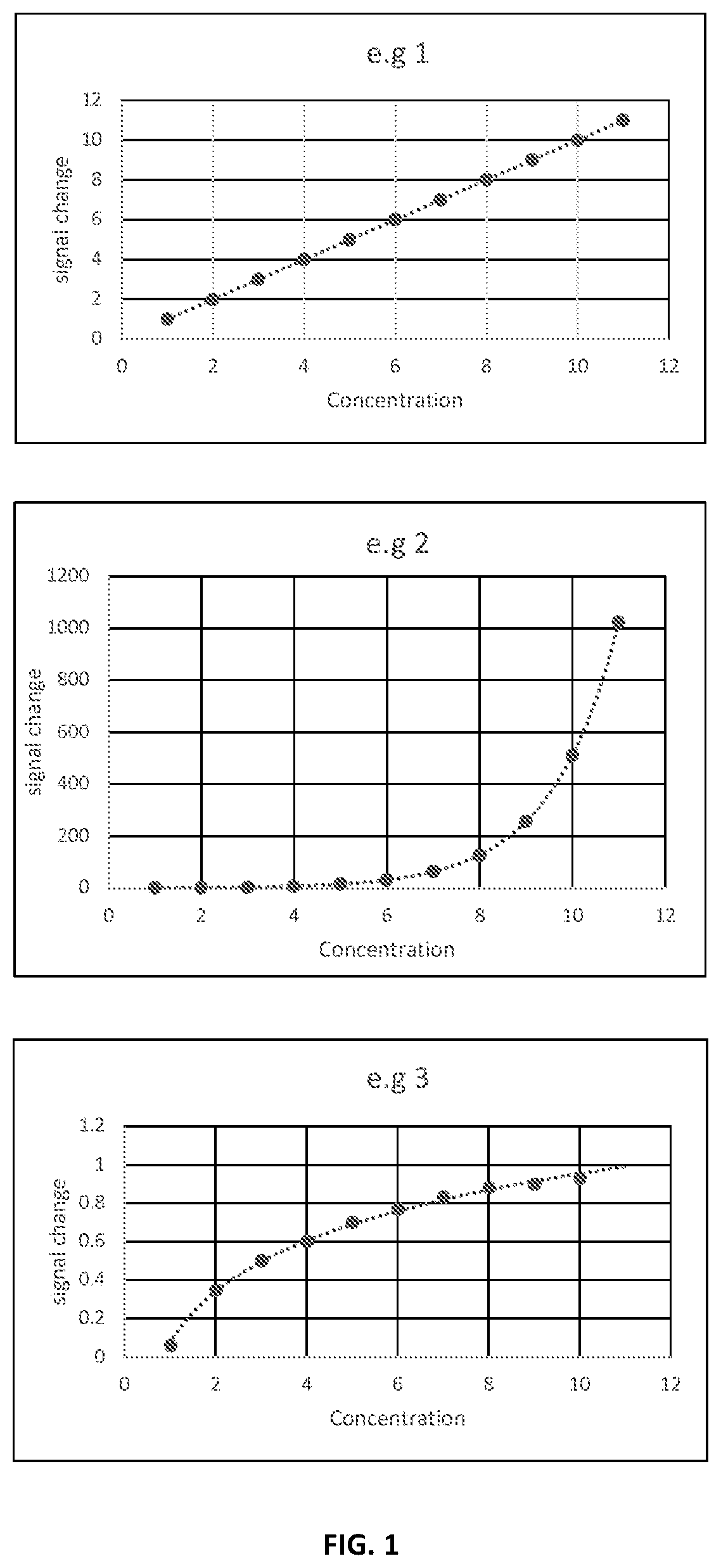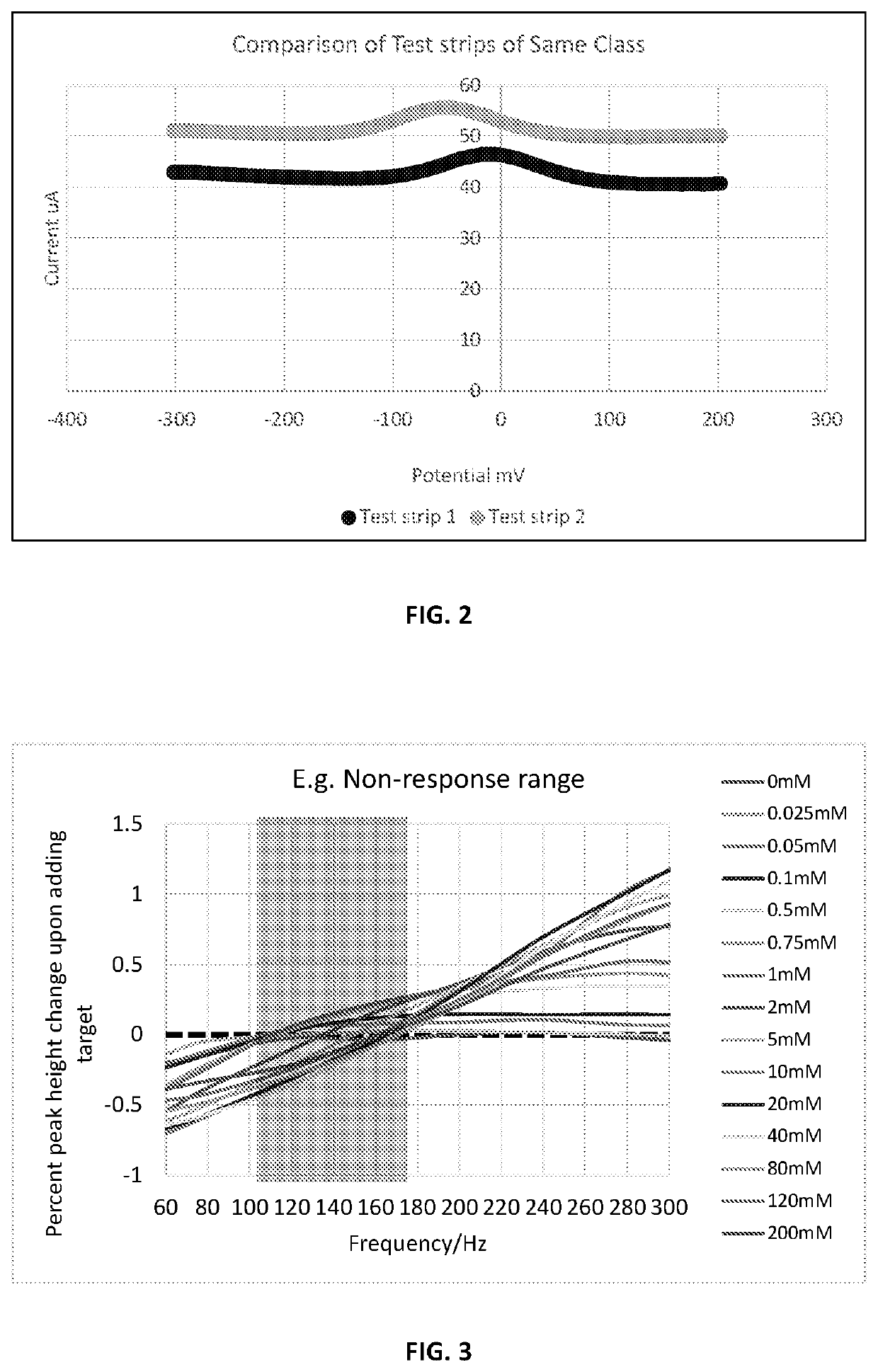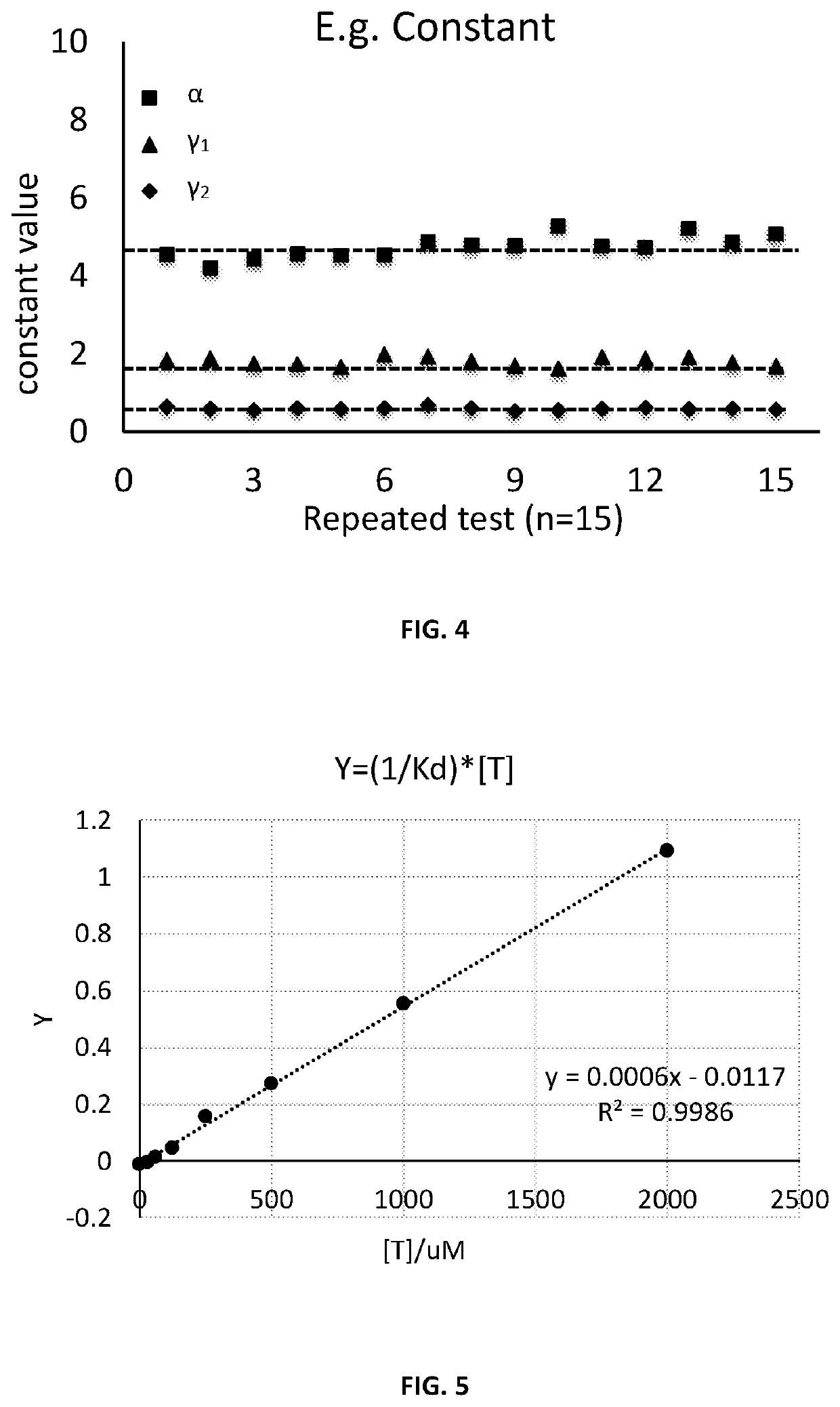Self-Parative Calibration Method of an Aptamer Sensor
a self-parative, aptamer technology, applied in the direction of instruments, porous material analysis, measurement devices, etc., can solve the problem that the production of sensors cannot absolutely avoid the existence of electrode-to-electrode variations, the effect of extra space within the device for blank solution and/or extra electrodes
- Summary
- Abstract
- Description
- Claims
- Application Information
AI Technical Summary
Benefits of technology
Problems solved by technology
Method used
Image
Examples
Embodiment Construction
[0019]The method is applied to a sensor modified with an aptamer as bioreceptor. Aptamers are oligonucleotides or peptide molecules that bind to a specific target molecule with high affinity to target molecules based on three-dimensional conformations that interact with the complementary target molecules. The more target present in a sample, the more aptamers bind and the larger the average measured signal (faradic discharge current) across the electrode surface when an electrochemical method is applied. The electrochemical method is preferably a pulsed voltammetry method such as square wave voltammetry (SWV) or differential pulse voltammetry (DPV. In these methods, the current response is measured when potential is applied across the working, reference and counter electrodes of the sensor.
[0020]Upon binding, some aptamers undergo conformational change. The aptamers for target analyte may be developed using SELEX (Systematic Evolution of Ligands by EXponential enrichment) method, wh...
PUM
| Property | Measurement | Unit |
|---|---|---|
| frequencies | aaaaa | aaaaa |
| frequency | aaaaa | aaaaa |
| concentration | aaaaa | aaaaa |
Abstract
Description
Claims
Application Information
 Login to View More
Login to View More - R&D
- Intellectual Property
- Life Sciences
- Materials
- Tech Scout
- Unparalleled Data Quality
- Higher Quality Content
- 60% Fewer Hallucinations
Browse by: Latest US Patents, China's latest patents, Technical Efficacy Thesaurus, Application Domain, Technology Topic, Popular Technical Reports.
© 2025 PatSnap. All rights reserved.Legal|Privacy policy|Modern Slavery Act Transparency Statement|Sitemap|About US| Contact US: help@patsnap.com



